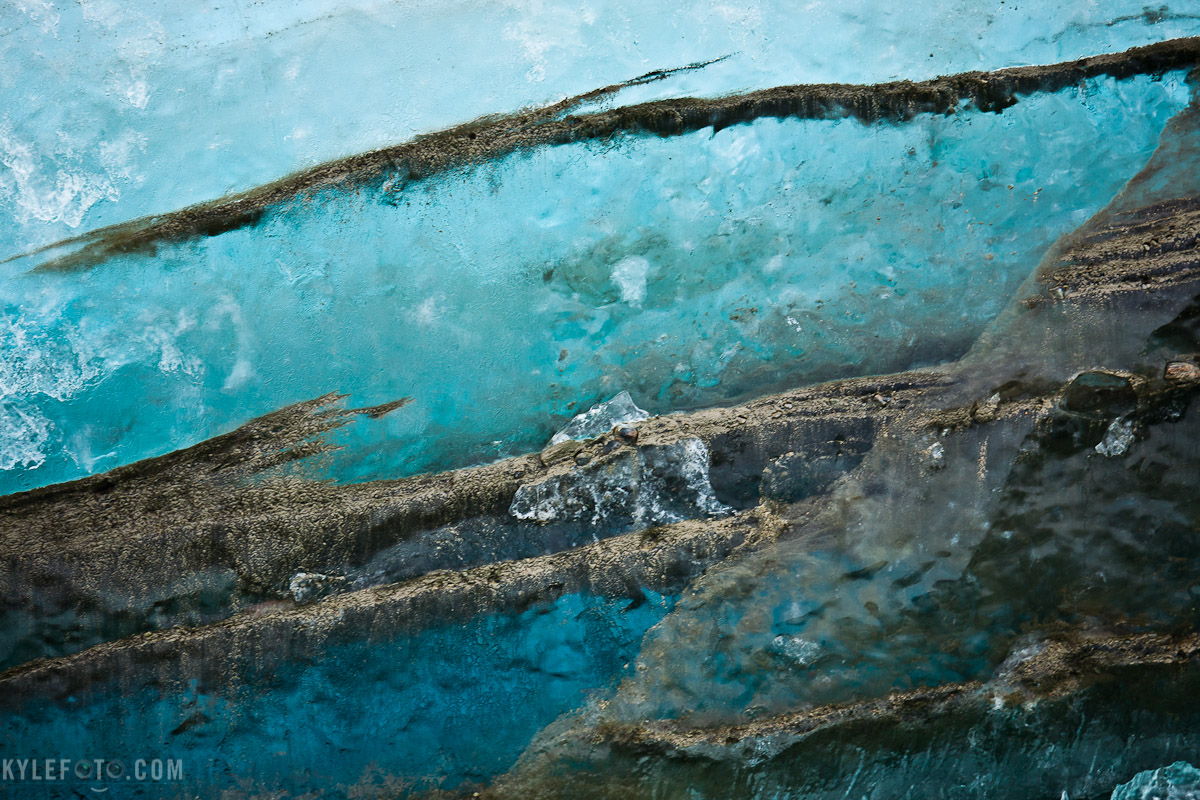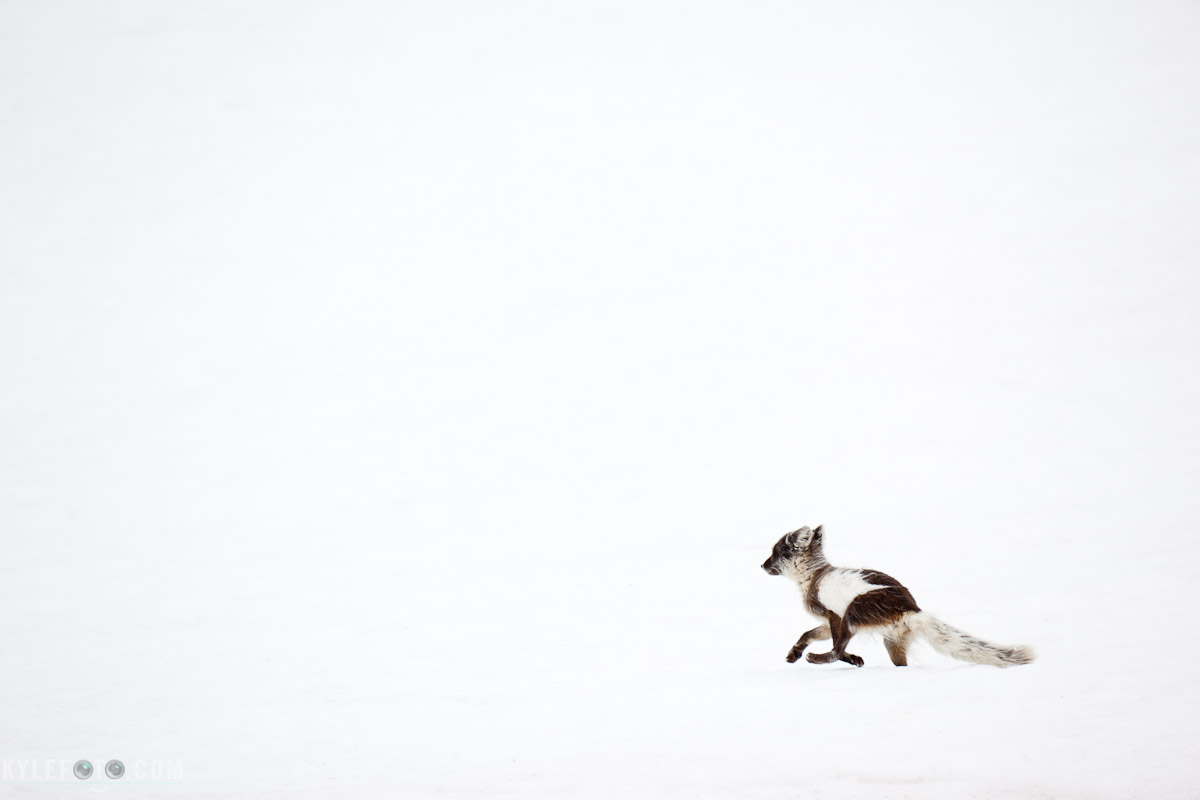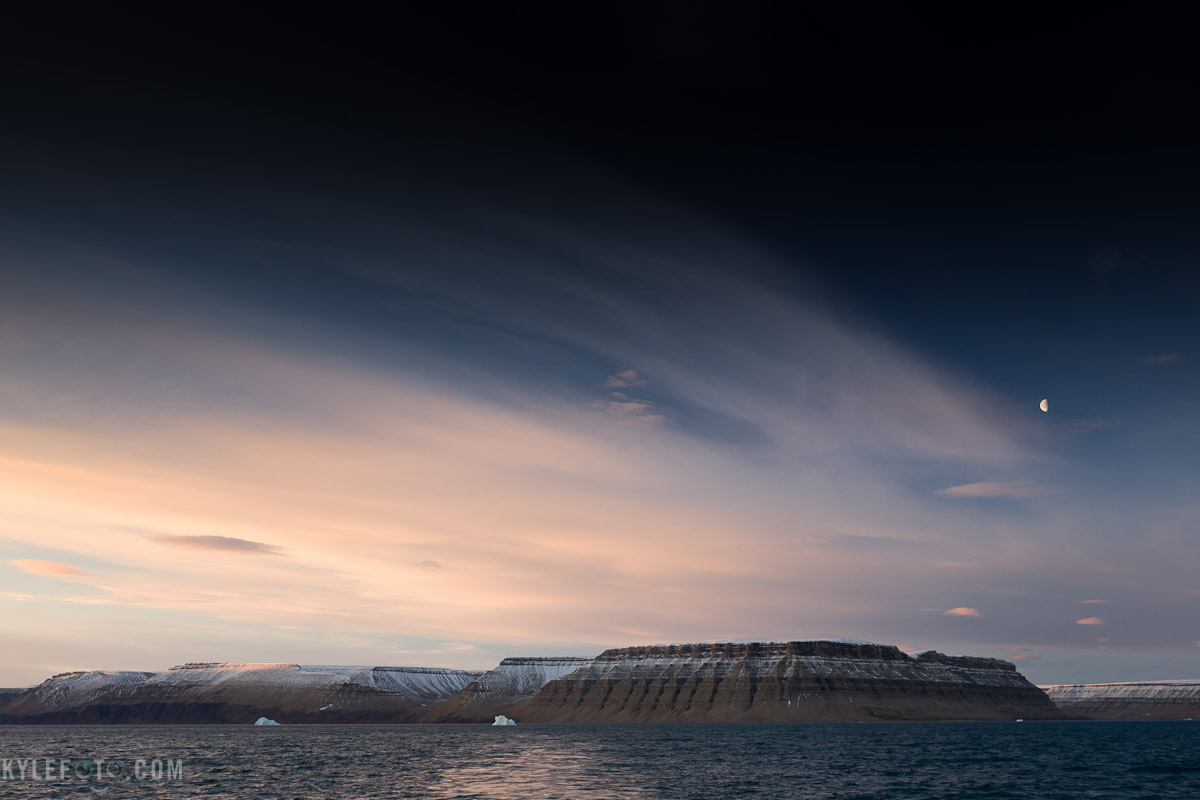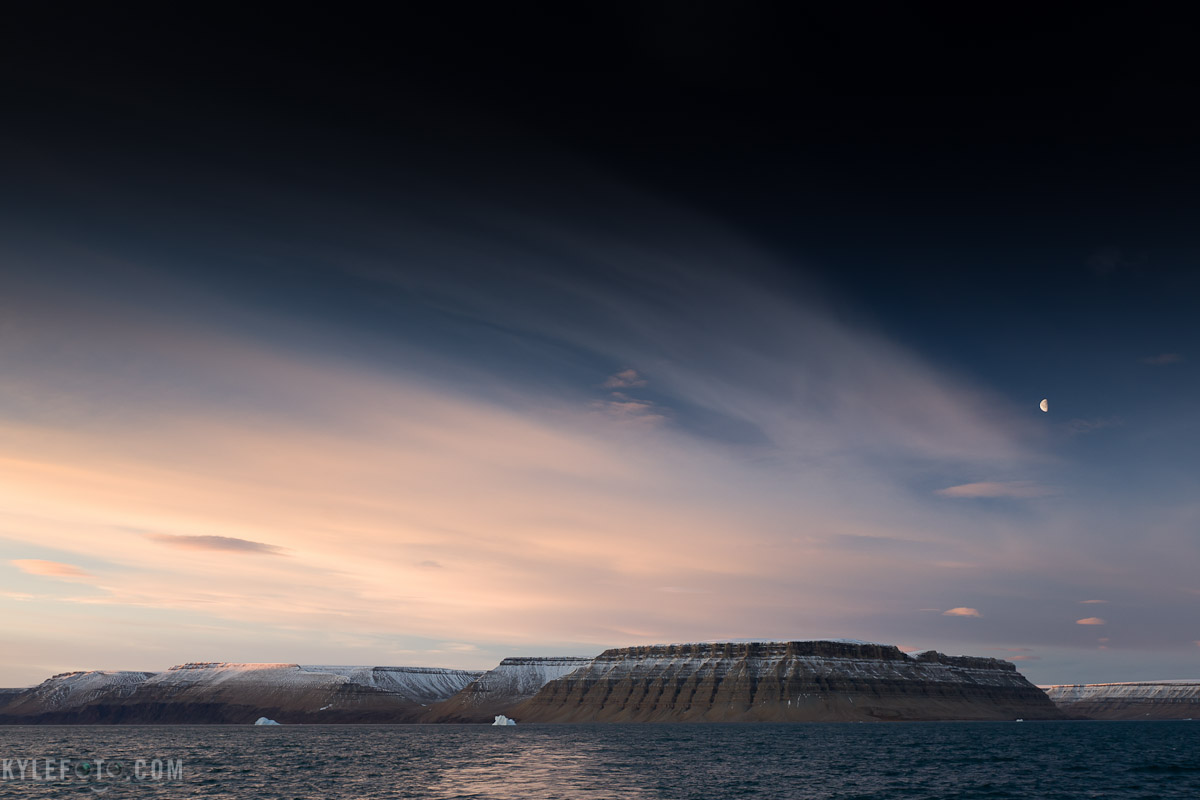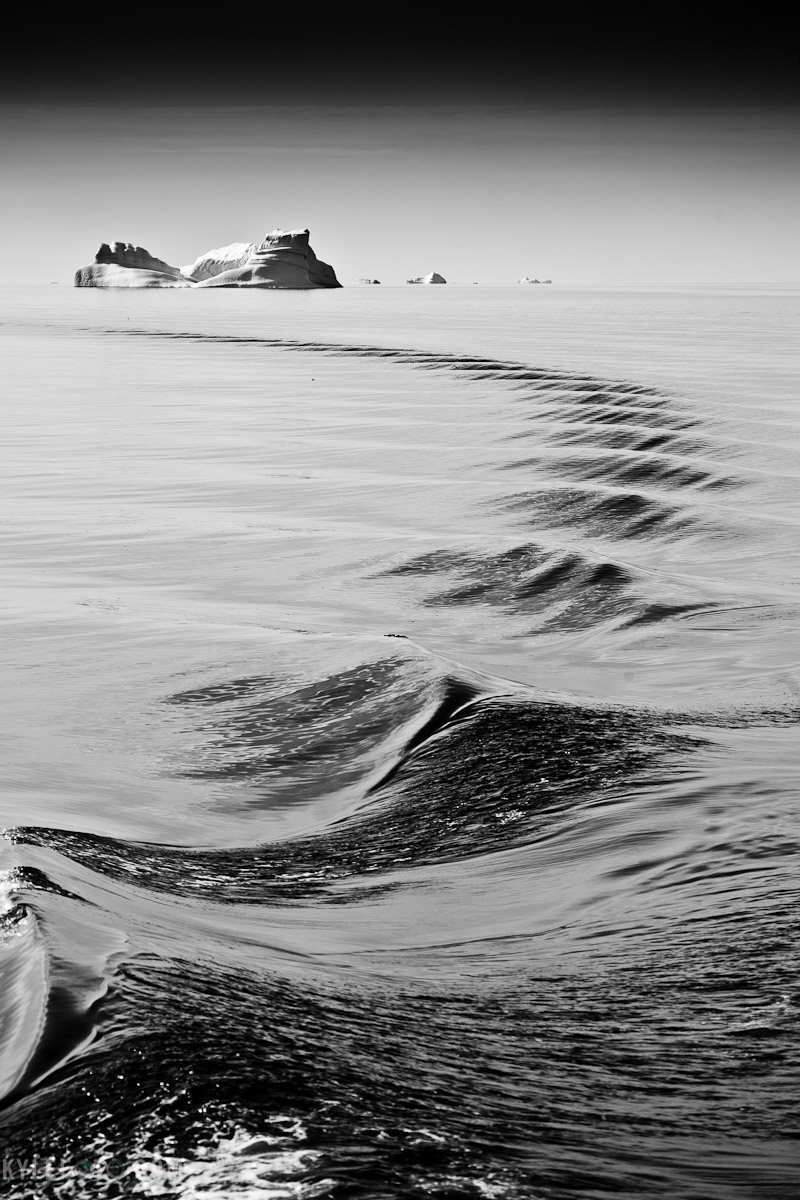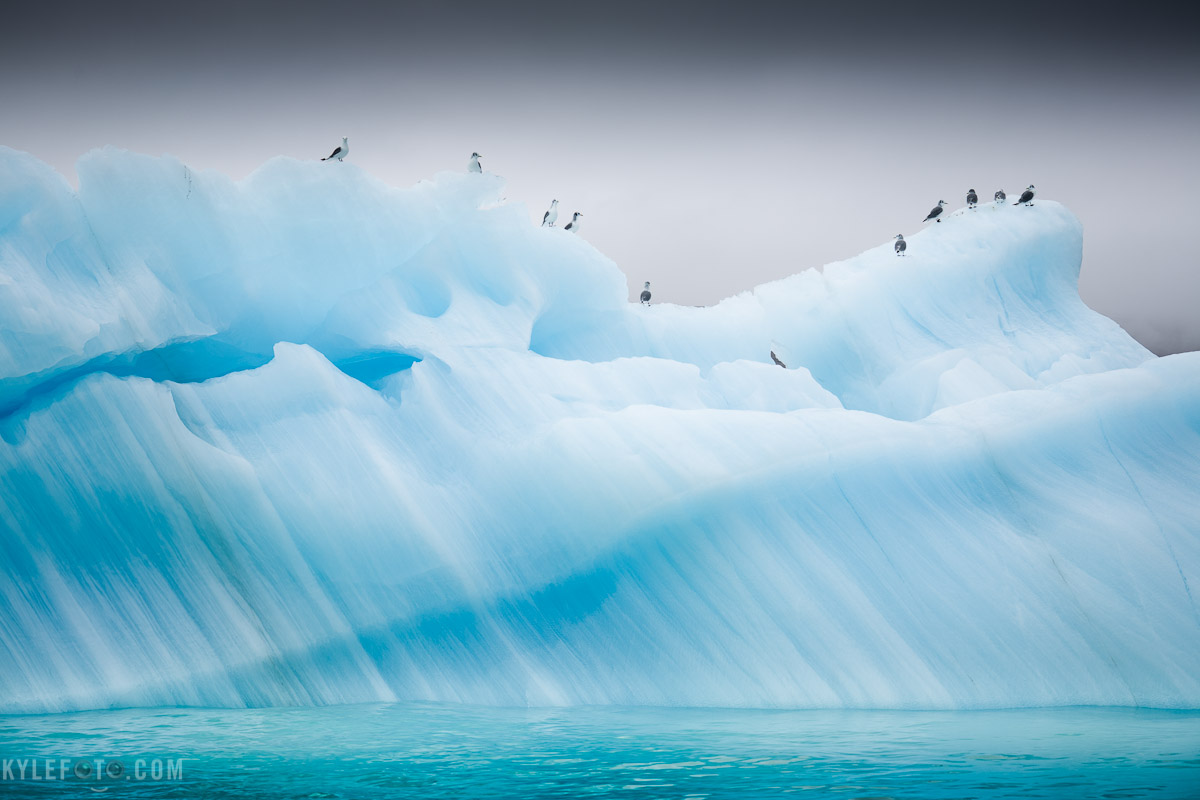Gold Harbour, South Georgia, Antarctica Photographic details: These penguins were all standing in a stream of glacier runoff, as penguin feathers and other lovely things floated by. I wanted to capture how still these penguins can be, with the exception of the occasional turn of the head and a moment to preen their feathers.
I sat down with my tripod in the water and wanted to get the slowest shutter speed possible to get the maximum amount of motion blur. This was an easy technical problem to solve, let in as little light as possible by closing down my aperture to f16, decrease sensitivity with an ISO of 50. This gave me an acceptable 6 second exposure. With these settings the water looks smooth and icy as if frozen over with the passing penguin feathers streaking by. I cropped the image to keep the line of penguins on the top third, emphasizing the strange etherial space that makes up the stream they are resting in. My hope is to express what penguin watching can be like in some areas of the colonies, they may simply stand there and molt, only moving every so often to satisfy an itch, or take a look around.



















